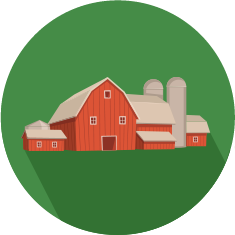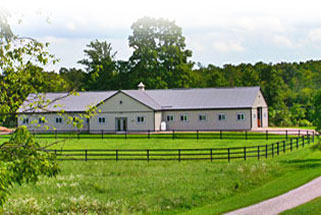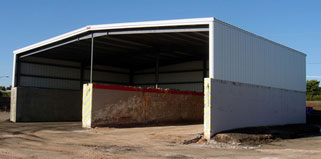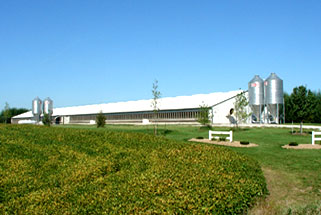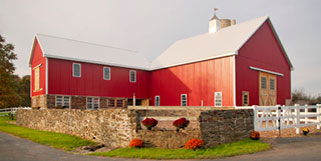Calculating the replacement cost of any structure, whether residential or commercial, comes with its considerations but estimating the replacement cost of a pig farm comes with a unique challenge – the specific types of barns required to house pigs by age and weight, as well as evolving waste disposal and groundwater regulations. For this reason, when professionals engaged in farm valuation need an up-to-date cost evaluation tool, they turn to The Douglas Agriculture Cost Guide, confident that it gives them accurate, up-to-date farm replacement cost data garnered from sources throughout Canada.
There are more than 7,400 Canadian pig farms of various types and sizes. Together they raise an estimated 14.5 million pigs. Several factors make the task of estimating the replacement cost of a pig farm a difficult one.
Multiple Dedicated Barns and Their Structural Integrity
As with any rebuild valuation for insurance, the starting point is evaluating the extent of the damage. But when it comes to swine facilities, most have more than one barn, so each has to be evaluated separately. Once that step has been completed, the weight of the pigs housed in the structure must be calculated since it will determine the type of materials, architectural design, and weight-bearing requirements called for in replacing it.
- Farrow-to-wean barns will house mother pigs (sows)and piglets from birth until they are weaned, at which point they weigh 10-15 lbs
- Farrow-to-nursery barns house sows and their offspring until they weigh 40 to 50 lbs (commodity pigs)
- Finishing barns house commodity pigs until they reach market weight at approximately 285 lbs
These buildings may look the same to the unpracticed eye, but they are not. Finishing barns need reinforced concrete floors, whereas the other two may use slatted floors.
Up-to-Date Pig Production Technology
Different heating and ventilation requirements apply to the structures. Finishing barns may be kept at cooler temperatures than farrow-to-wean barns. More and more pig farms are now turning to computers to regulate temperature and humidity, feeding, watering, and feces clearing. The cost of this technology must also be factored in, along with building materials, insulation, and labour costs.
Government Disease Prevention Regulation Standards
To ensure the health of the nation’s pigs and the safety of pork products, the government has implemented stringent sanitation and quarantine standards, beginning with the early weaning of baby pigs and increasing the distance between the barns the pigs cycle through from birth to market. This means that farrow-to-nursery barns may need to be larger, but to comply with new regulations, all barns will need to be rebuilt at greater distances from each other.
Ecological Waste Disposal Systems
Canada is pursuing environmental protection, so while older pig farms may have manure storage compartments under each barn floor, current pig farming hygiene standards call for two alternate ways of pig waste disposal, both of which convert fecal waste to fertilizer:
- Compost disposal, a bio-treatment involving microorganism fermentation
- Fecal wastewater recycling, requiring sewage transportation to a treatment pond for anaerobic and aerobic treatment
The Douglas Agriculture Cost provides up-to-date farm revaluation estimates for all pig farms throughout Canada, whether they’re multi-barn operations or those that make use of separate properties dedicated to farrow-to-nursery, farrow-to-weaning, farrow-to-finishing, or finishing care.
The Value of the Douglas Agricultural Cost Guide
The Douglas Agricultural Guide has been providing cost data for farm properties for 30+ years. Nowhere is this more evident than in the data they have compiled for estimating the replacement cost of Canadian pig farms where multiple barns house the swine and changing animal health, food safety, and waste disposal regulations continue to evolve, as do labour and material costs, and permit, licensing and inspection fees.
Available in both an online tool and a paper version, the Douglas Agricultural Guide serves as common ground where real estate appraisers, insurance underwriters, loss prevention inspectors, or other stakeholders can reach an agreement on pig farm replacement costs.


